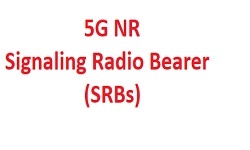5G NR Layer 3- RRC Interview Questions
Introduction
In this post we will list the Interview Questions for 5G NR on Layer 3 which includes RRC, NGAP, XnAP etc.
Most Important Interview Questions
- 5G Cell Search – Synchronization Raster and Channel Raster?
- What is the content of MIB in 5G?
- What do you understand by RMSI and OSI w.r.t. System information in 5G?
- What is the content of SIB#1 in 5G?
- What is SI-RNTI number?
- What is the difference between 5G SIB#1 and 4G SIB#1
- What is use of MIB IE “pdcch-ConfigSIB1” ?
- Explain ControlResourceSetZero & SearchSpaceZero ?
- List the all available SIB in 5G?
- What is pointA. How UE find out pointA Frequency and SSB Center Frequency?
- What is kSSB, how it is used?
- What is SubcarrierSpcaingCommon?
- Which RRC message containing BWP information?
- What is RRC Connection cause ?
- What is the Use of RRC Connection cause with High-Priority?
- What is Unified access control?
- Explain Signaling Radio Bearers (SRBs) w.r.t. 5G?
- Which SRB has highest and least priority?
- Which RLC mode is used for SRBs?
- How Network and Radio Capabilites is transferred in 5G to NG-RAN and 5GC?
- How many states are defined for RRC?
- What is the role of RRC layer in Carrier Aggregation (CA) ?
- List the alrogrithms used for 5G RRC and NAS chipering and integrity?
- How UE finds channel B/W when no IE available in 5G MIB?
- What is Paging RNTI (P-RNTI) number?
- Explain about Paging in 5G?
- What all the channel involved in Paging Flow? Explain form Top to Bottom
- What is MeasObject, ReportConfig and MeasID?
- How MeasObject, ReportConfig and MeasID are related?
- What the all measurement event available in 5G?
- What is the use of A1, A2 and A3 Event?
- What do you understand from Offset and threshold w.r.t. measurement events?
- Explain Handover? what are the different types of HO defined for 5G based on Interfaces?
- Explain XnAP Handover Call Flow?
- Explain N2 or NGAP Handover?
- Where XnAP handover is used and where NGAP handover is used?
- What in N26 Interface and what its significance w.r.t. 5G?
- Explain 5G SA Registration Call Flow?
- How 5G can support Voice Service?
- What is VoNR and Explain the Call flow?
- What is RoHC and how it used for VoNR?
- What 5QI does not use RoHC w.r.t. VoNR?
- What the different types of RoHC profile define and which one applicable for VoNR?
Q: What are the benefits of 5G?
A: Faster download and upload speeds, lower latency, greater capacity, and supports new use cases like autonomous vehicles, remote surgery, and virtual and augmented reality.
Q: What technologies are used in 5G?
A: 5G uses advanced technologies such as millimeter waves, massive MIMO, beamforming, and small cell networks.
Q: What is latency in 5G?
A: Latency in 5G is as low as 1 millisecond (ms), which means there is very little delay in transmitting data over the network.
Q: What is network slicing?
A: Network slicing in 5G is a technology that creates virtual networks with customized performance characteristics to meet the needs of different users or applications.
Q: What is beamforming ?
A: Beamforming in 5G is a technique that focuses the wireless signal in a specific direction, improving coverage and reducing interference.
Q: How does 5G use small cell networks?
A: 5G uses small cell networks to improve coverage and capacity in areas where there is high demand for wireless connectivity, such as urban centers.
Q: What is EN-DC?
A: EN-DC (E-UTRA-NR Dual Connectivity) is a technology used in 5G networks that allows for simultaneous connections to both 4G and 5G networks.
Q: What are the benefits of EN-DC?
A: The benefits of EN-DC include improved coverage, reduced latency, and faster data speeds, as well as the ability to use 5G-specific features and applications.
Q: What is the maximum data speed supported by EN-DC?
A: EN-DC can support data speeds of up to 2 Gbps, depending on network conditions and device capabilities.
Q: What is the role of the 4G LTE network in EN-DC?
A: The 4G LTE network in EN-DC provides the control plane signaling and anchor point for the dual connectivity with the 5G NR network.
Q: Can EN-DC work with other technologies like Wi-Fi and Bluetooth?
A: Yes, EN-DC can work in conjunction with other wireless technologies like Wi-Fi and Bluetooth, allowing for seamless connectivity across different networks and devices.
Q: What are the different deployment models for 5G architecture?
A: The different deployment models for 5G architecture include non-standalone (NSA) and standalone (SA) modes. NSA mode uses existing 4G LTE networks for certain functions, while SA mode is a completely independent 5G network.
Q: What is the role of network slicing in 5G architecture?
A: Network slicing is a key feature of 5G architecture that allows network operators to divide the network into virtualized slices, each with its own unique characteristics and capabilities. This allows operators to tailor the network to specific use cases and applications.
Q: What is the role of edge computing in 5G architecture?
A: Edge computing is a key feature of 5G architecture that enables data processing and storage to occur closer to the end user, reducing latency and improving overall network performance.
Related Posts
- DevOps – Jenkins Inteview Questions
- DevOps – Networking Interview Questions
- LTE Layer 1 (Physical Layer) Interview Questions
- LTE Layer 2 (MAC,RLC,PDCP) Interview Questions
- LTE Layer 3 (RRC Layer) Interview Questions



